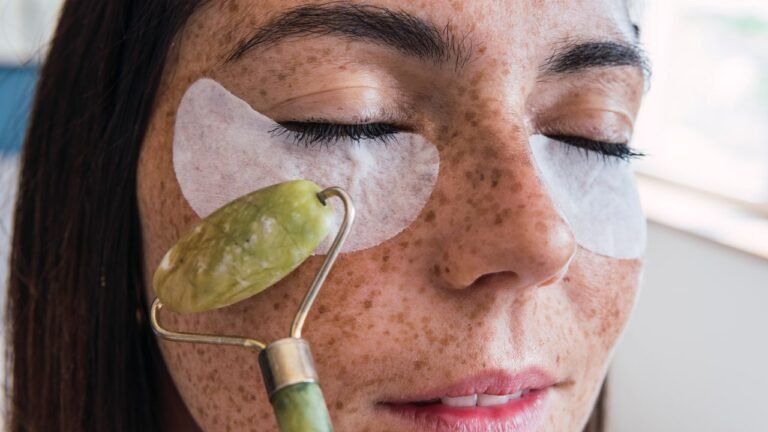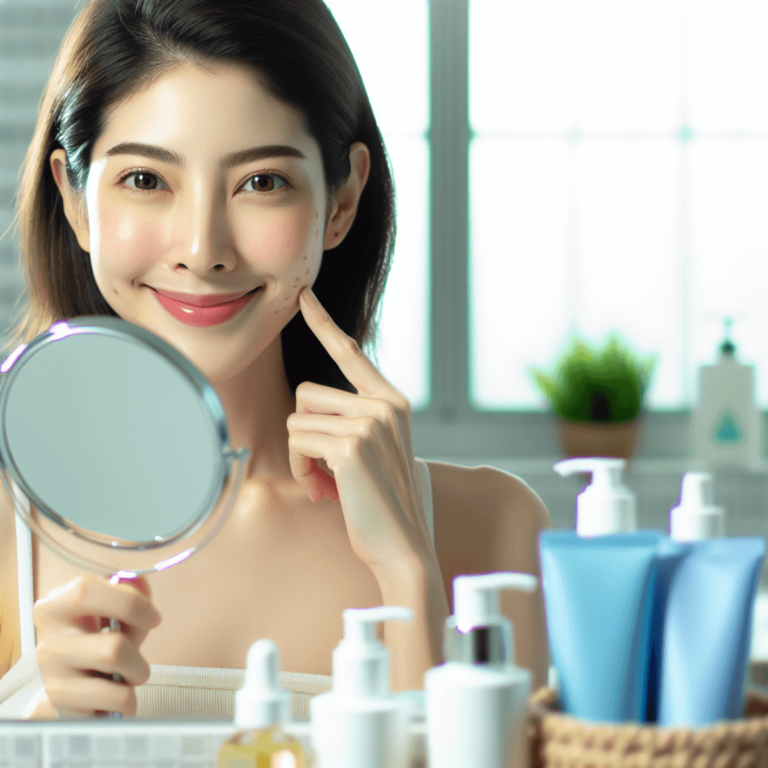How to Get Rid of Chest Acne: The Most Effective Natural Ways

Introduction
Dealing with chest acne can feel like an endless battle against your own skin. This frustrating condition affects millions worldwide, causing red, inflamed bumps across the chest area that can make you think twice about wearing your favorite low-cut tops or swimming attire.
Did you know? Studies show that up to 15% of adults experience chest acne at some point in their lives. The condition doesn’t discriminate – it affects people of all ages, genders, and skin types.
The impact of chest acne extends beyond physical discomfort:
- Reduced self-confidence in social situations
- Limitations in clothing choices
- Emotional stress from persistent breakouts
- Physical discomfort, especially when wearing tight clothing
Many people turn to natural treatments for chest acne, seeking gentler alternatives to harsh chemicals. These natural solutions often prove effective while minimizing potential skin irritation and side effects.
Ready to transform your skin? We’ll dive deep into proven natural remedies that can help you achieve clearer, healthier chest skin. From powerful plant-based ingredients to simple lifestyle adjustments, you’ll discover practical solutions to tackle chest acne head-on. These methods work with your body’s natural healing processes to restore balance and clarity to your skin.
Understanding Chest Acne
Chest acne is caused by a combination of biological factors that affect the health of your skin. The main causes are similar to those of facial acne, but the unique features of the chest area make it more prone to breakouts.
Key Factors Contributing to Chest Acne:
1. Excess Oil Production
- Your sebaceous glands produce natural oils (sebum)
- Overactive glands create too much oil
- Oil combines with dead skin cells to clog pores
2. Dead Skin Cell Buildup
- Skin cells naturally shed and regenerate
- Improper exfoliation leads to accumulation
- Dead cells mix with oil, creating blockages
3. Bacterial Growth
- P. acnes bacteria thrive in clogged pores
- Warm, moist chest environment promotes bacterial growth
- Bacteria trigger inflammation and infection
4. Hormonal Fluctuations
- Androgens stimulate oil gland activity
- Menstrual cycles affect hormone levels
- Puberty, pregnancy, and stress impact hormonal balance
The specific characteristics of the chest area make it more susceptible to acne:
- Larger pores compared to facial skin
- Higher concentration of oil glands
- Regular exposure to sweat
- Friction from clothing
- Limited air circulation
These factors create an ideal environment for acne formation. The thickness of the skin on the chest varies from person to person, which affects how acne develops and appears. Some individuals experience surface-level breakouts, while others struggle with deep, painful cystic acne.
Different types of chest acne include:
- Blackheads: Open pores filled with oxidized oil
- Whiteheads: Closed pores with trapped oil
- Papules: Red, inflamed bumps
- Pustules: Pus-filled lesions
- Cysts: Deep, painful lumps under the skin
Effective Natural Remedies for Chest Acne
Nature offers powerful solutions for treating chest acne. Here’s a comprehensive guide to the most effective natural remedies you can try at home:
1. Tea Tree Oil Treatment
- Mix 5-10 drops of tea tree oil with 1 tablespoon of carrier oil (jojoba or coconut)
- Apply the mixture directly to affected areas using a cotton ball
- Use twice daily after cleansing
Tea tree oil’s natural antibacterial properties target acne-causing bacteria while reducing inflammation.
2. Cinnamon-Honey Mask Recipe
- 2 tablespoons raw honey
- 1 teaspoon ground cinnamon
Mix ingredients into a paste and apply to chest area for 10-15 minutes. Rinse with lukewarm water and use 2-3 times weekly for best results.
3. Gentle Exfoliation Methods
- Use a soft-bristled body brush
- Try chemical exfoliants with alpha-hydroxy acids
Limit exfoliation to 1-2 times weekly, focusing on circular, gentle motions and avoiding harsh scrubbing that can irritate skin.
4. Hydration Strategy
- Drink 8-10 glasses of water daily
- Include water-rich foods in your diet
Use alcohol-free moisturizers, apply hydrating products immediately after showering, and consider using a humidifier in dry environments.
5. Salicylic Acid Applications
Choose products with 0.5-2% concentration and apply to clean, dry skin. Start with once-daily application and increase frequency if skin tolerates well. Look for body washes containing salicylic acid.
6. Benzoyl Peroxide Tips
Begin with 2.5% concentration and apply a thin layer to affected areas. Wait 2-3 minutes before dressing, use white towels and clothing (to prevent bleaching), and apply at night to maximize effectiveness.
7. Aloe Vera Solutions
Extract fresh gel from aloe leaves and apply directly to chest acne. Leave on for 15-20 minutes before rinsing off with lukewarm water.
Lifestyle Changes for Preventing Chest Acne Breakouts
Your daily habits play a crucial role in managing chest acne. Simple lifestyle adjustments can create significant improvements in your skin’s health.
Hygiene Best Practices
- Shower immediately after sweating or exercising
- Use a gentle, non-comedogenic body wash specifically designed for acne-prone skin
- Change your sheets and pillowcases twice weekly
- Clean your phone regularly if you tend to hold it against your chest
- Avoid touching your chest area unnecessarily
- Pat your skin dry instead of rubbing to prevent irritation
Smart Clothing Choices
Tight-fitting clothes trap sweat and bacteria against your skin, creating an ideal environment for acne to thrive. Make these adjustments to your wardrobe:
- Choose Natural Fabrics: Cotton, linen, and bamboo allow your skin to breathe
- Opt for Loose Fits: Give your skin space to breathe, especially during workouts
- Select Moisture-Wicking Materials: For exercise wear, choose fabrics that pull sweat away from your skin
- Wash New Clothes: Before wearing new items, wash them to remove potential irritants
- Avoid Harsh Detergents: Use hypoallergenic laundry products free from heavy fragrances
Diet and Nutrition Impact
Your food choices directly affect your skin’s health. Include these skin-supporting foods in your diet:
Beneficial Foods:
- Omega-3 rich fish (salmon, mackerel)
- Green leafy vegetables
- Berries and citrus fruits
- Nuts and seeds
- Whole grains
Foods to Limit:
- Dairy products
- Refined sugars
- Processed foods
- High-glycemic carbohydrates
- Greasy, fried foods
- Drink 8-10 glasses of water daily
- Include hydrating foods like cucumber and watermelon
- Limit caffeine and alcohol intake
- Track your water intake using a dedicated water bottle
Remember to maintain consistency with these lifestyle changes. Your skin needs time to respond to new habits, and results typically become visible after several weeks
When to Seek Professional Help for Persistent Chest Acne
Natural remedies and lifestyle changes prove effective for many people dealing with chest acne. Yet certain signs indicate it’s time to consult a dermatologist:
Red Flags for Professional Consultation:
- Acne persists after 10-12 weeks of consistent treatment
- Deep, painful cysts or nodules develop
- Scarring begins to appear
- Significant emotional distress affects daily life
- Dark spots remain long after acne heals
- Breakouts spread to other body areas
A dermatologist brings specialized expertise and access to prescription-strength treatments unavailable over the counter. These medical professionals can:
- Prescribe topical retinoids for severe cases
- Recommend oral antibiotics to fight bacterial infections
- Provide cortisone injections for painful cysts
- Suggest hormonal treatments if needed
- Create personalized skincare routines
- Perform chemical peels or other professional treatments
- Address underlying medical conditions contributing to acne
Your dermatologist might combine multiple treatment approaches, adjusting them based on your skin’s response. They’ll also help prevent scarring and address existing marks through targeted treatments like laser therapy or microdermabrasion.
Documentation Tips Before Your Visit:
- Take photos of your breakouts
- Track your acne patterns
- List current products and treatments
- Note any triggers you’ve identified
- Record your diet and lifestyle habits
Conclusion
Achieving clear, healthy skin requires dedication and a well-rounded approach. Natural remedies like tea tree oil, honey masks, and aloe vera treatments work best when combined with mindful lifestyle choices. Your journey to chest acne relief starts with understanding your skin’s needs and responding with gentle, consistent care.
Remember these key principles for lasting results:
- Choose natural treatments that match your skin sensitivity
- Stay committed to your skincare routine
- Listen to your body’s responses
- Make conscious lifestyle adjustments
- Seek professional guidance when needed
The path to clear skin isn’t always straightforward – some methods might work better than others for your specific case. Be patient with the process and celebrate small improvements. Your skin deserves gentle, natural care combined with healthy living practices. Start implementing these natural solutions today, and take the first step toward achieving the clear, confident skin you deserve.
FAQs (Frequently Asked Questions)
What causes chest acne?
Chest acne can be caused by a variety of factors, including clogged pores, hormonal imbalances, excess oil production, dead skin cells, and bacteria. These elements can contribute to the development of acne on the chest area.
What are some effective natural remedies for treating chest acne?
Some effective natural remedies for chest acne include using tea tree oil for its antibacterial properties, applying a cinnamon and honey mask for its anti-inflammatory effects, regular exfoliation to prevent clogged pores, staying hydrated, and utilizing aloe vera for its soothing benefits.
How can lifestyle changes help prevent chest acne breakouts?
Lifestyle changes such as maintaining proper hygiene practices, wearing breathable fabrics to reduce sweat accumulation, and following a balanced diet rich in fruits and vegetables can significantly help in preventing chest acne breakouts.
When should I seek professional help for chest acne?
You should seek professional help if you experience persistent or severe chest acne that does not respond to over-the-counter treatments or natural remedies. A dermatologist can provide advanced treatment options and personalized skincare advice tailored to your needs.
Can diet influence the occurrence of chest acne?
Yes, diet can influence the occurrence of chest acne. A balanced diet rich in fruits, vegetables, and whole grains supports overall skin health and may help reduce the likelihood of breakouts.
What role does hydration play in managing chest acne?
Hydration plays a crucial role in maintaining healthy skin. Staying adequately hydrated helps keep the skin moisturized, supports its barrier function, and may reduce the appearance of acne by preventing excess oil production.










